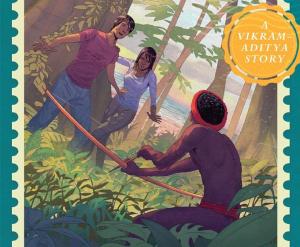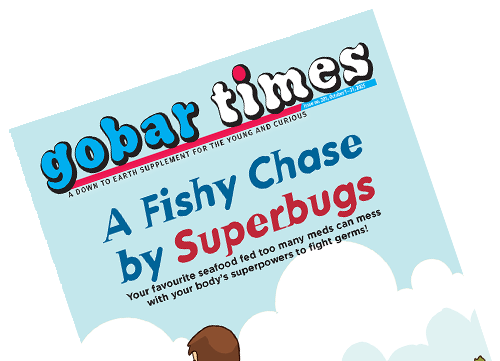
Meet the students turning kayaking into a weekly mission to collect plastic waste and keep the backwaters clean — one paddle at a time.

If there was ever a parliament of birds, then this avian would have delivered the most vociferous speeches. No doubt quirky artists caricatured it in their popular Angry Birds game. I’m sure you all must have enjoyed playing this viral pastime and gotten amused by the perpetual furious look on the birds' faces. Recognised as the most argumentative bird, the Jungle Babbler couldn’t be named more aptly...

A fascinating account by a passionate marine environmentalist explaining why seaweeds are environmentally the most sustainable foods on our planet. ******************************* Hi! Do you guys know what a seaweed is? It’s like the spinach of the sea. You might have eaten it in a roll of sushi or a bowl of green salad or a soup. But most likely, you wouldn’t have tasted it at all. That’s because in India, we don't have a popular tradition of seaweeds. But that's about to change—I believe as the founder of a seaweed food company called The Good Ocean...

In a unique initiative that blends hands-on learning with practical skill development and employability, the Government High School at Anji is training its students to identify and use wild edible plants. Nestled amidst the serene landscape of Anji in Himachal’s Solan district, a government high school stands as a beacon of education and empowerment for its students. In 2023, an innovative initiative has taken root within its grounds, one that not only enriches the curriculum but also cultivates valuable employability skills among its students...

Showcasing how visionary projects can nurture future leaders who are not only academically adept but also environmentally conscious and aware. ***************************** In an era of urbanization and technological advancements, the importance of connecting the youngsters with nature cannot be overstated. My school, the Sacred Heart in Kalyan, Maharashtra, stands as a beacon of inspiration in this regard. Their authorities had given me the mandate to set up a butterfly garden and provided all the required finance and manpower. And as our pioneering effort flourished with time, I was duly absorbed as a Nature educator...

The triple planetary crisis refers to three interconnected environmental crises that pose a threat to humanity—climate change, pollution, and biodiversity loss. We need to address this crisis by adapting to nature-based solutions that can leverage the inherent resilience of our ecosystem. One such solution is the conservation of mangroves. Mangroves are the kind of trees that are found in intertidal zones, between high tide and low tide, in tropical and subtropical regions...

Set to introduce young readers to a terrain that is largely believed to be elusive and mysterious, Andaman Adventure—The Jarawa is a work of fiction by children’s author Deepak Dalal, known for his conservation-themed books and particularly his Vikram-Aditya series. The Jarawa, the first of a two part story set in the Andaman, also focuses on the young, adventure-loving duo Vikram and Aditya as they navigate a dangerous situation across the islands...

Deep dive into the jungles undersea and gather some fascinating facts about the wonder world of seaweeds along India’s coastline.

The Mission and the Mangoes is a work of fiction that sets its premise around a dystopic, water-starved Earth where unrestrained mining, drilling and the exhaustion of earth’s resources is rendering the planet unlivable. The young author of the book, 12-year-old Hena Parveen, tries to marry a futuristic setting where technological advancements such as humanoid robots and regular space exploration are a reality, with the Earth’s ecosystem that is hurtling towards an inevitable collapse. Interestingly, all this does not take place in a far-fetched future...

“Such a beautiful place, to be with friends”. Fans of the Harry Potter film series will remember this line, uttered in one of the most heart-breaking scenes of the saga by arguably the most beloved character of them all, Dobby the house-elf. As the adorable elf breathes his last in the arms of his friend and hero, Harry Potter, he inadvertently invites viewers to marvel at the vast, expansive beach that then becomes his gravesite. Twelve years after...

